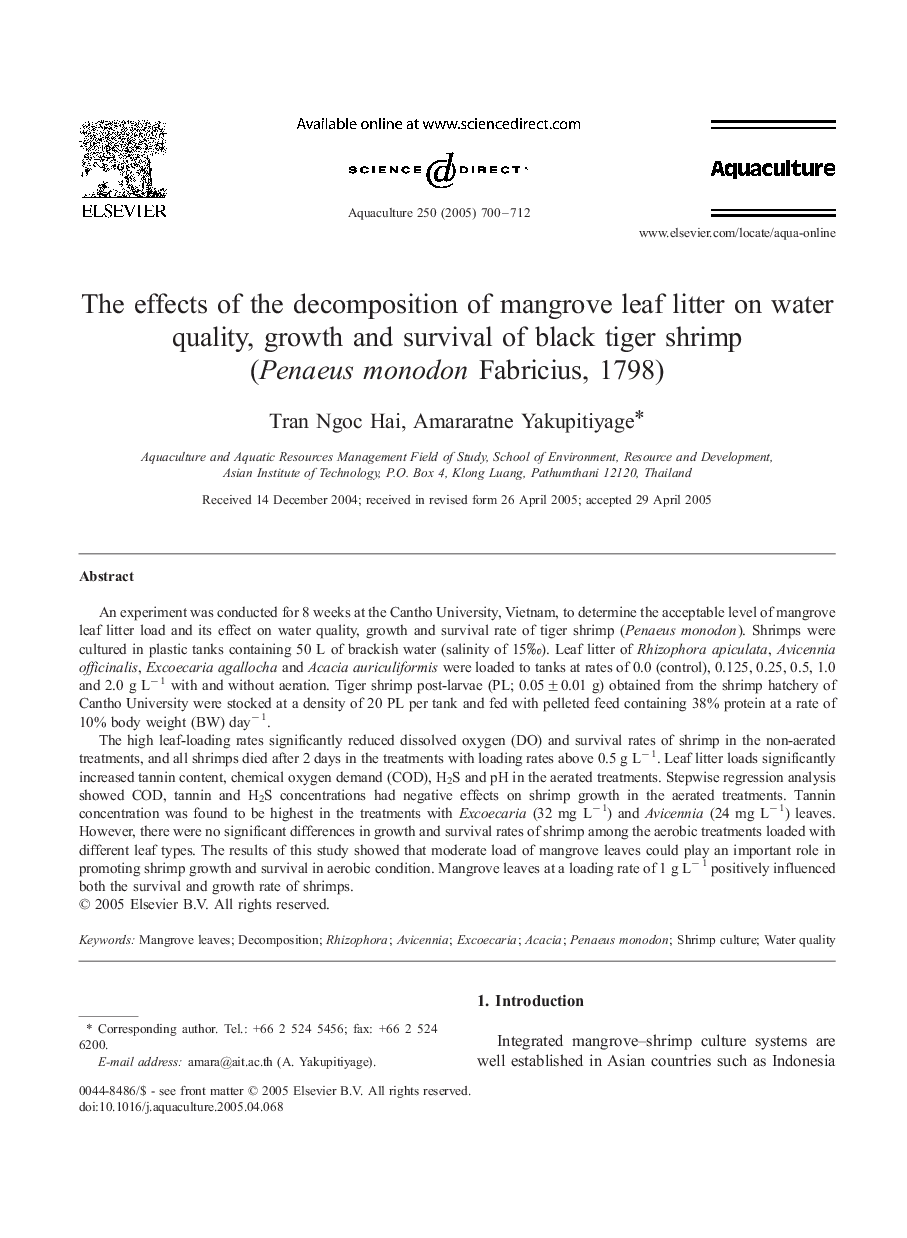| Article ID | Journal | Published Year | Pages | File Type |
|---|---|---|---|---|
| 8974564 | Aquaculture | 2005 | 13 Pages |
Abstract
The high leaf-loading rates significantly reduced dissolved oxygen (DO) and survival rates of shrimp in the non-aerated treatments, and all shrimps died after 2 days in the treatments with loading rates above 0.5 g Lâ 1. Leaf litter loads significantly increased tannin content, chemical oxygen demand (COD), H2S and pH in the aerated treatments. Stepwise regression analysis showed COD, tannin and H2S concentrations had negative effects on shrimp growth in the aerated treatments. Tannin concentration was found to be highest in the treatments with Excoecaria (32 mg Lâ 1) and Avicennia (24 mg Lâ 1) leaves. However, there were no significant differences in growth and survival rates of shrimp among the aerobic treatments loaded with different leaf types. The results of this study showed that moderate load of mangrove leaves could play an important role in promoting shrimp growth and survival in aerobic condition. Mangrove leaves at a loading rate of 1 g Lâ 1 positively influenced both the survival and growth rate of shrimps.
Keywords
Related Topics
Life Sciences
Agricultural and Biological Sciences
Aquatic Science
Authors
Tran Ngoc Hai, Amararatne Yakupitiyage,
